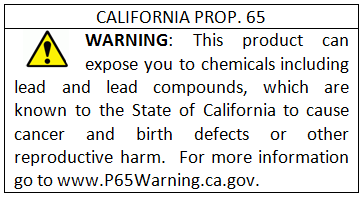The California Prop 65 list is continuously growing and maintained in the Enviropass’ product compliance form that you are free to use while gathering Cal Prop 65 data from your supply chain.
Similar to RoHS and REACH, Enviropass recommends a documentary approach with risk assessments of the supply chain to do California Proposition 65 testing and provide the right warning notice for California residents.









